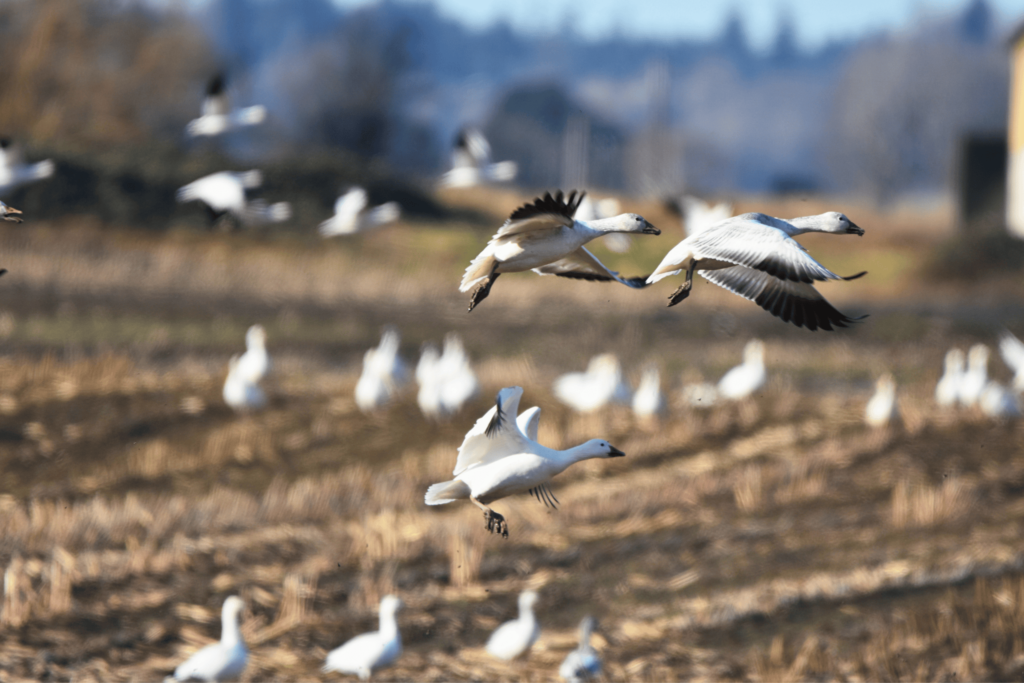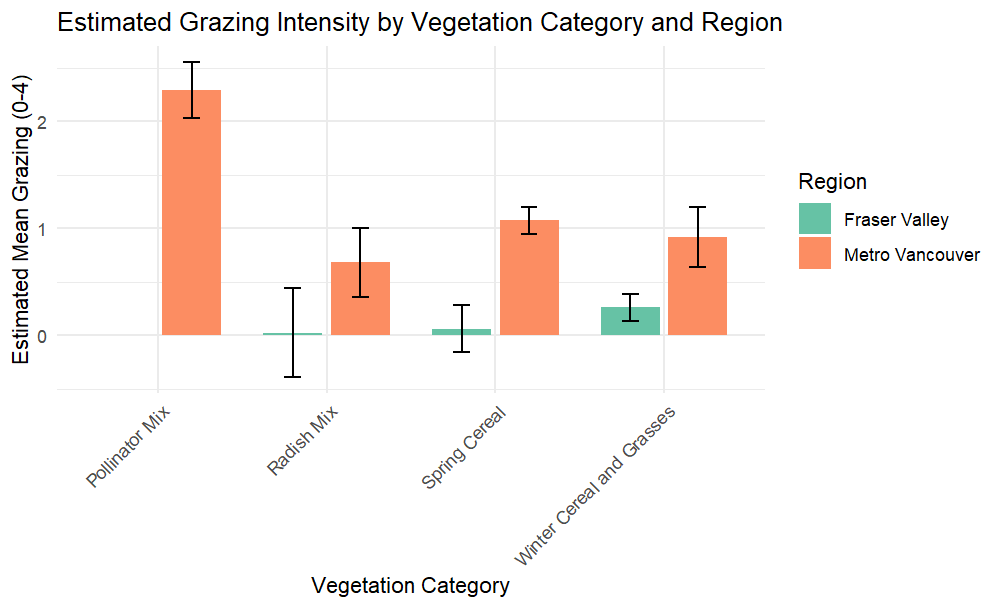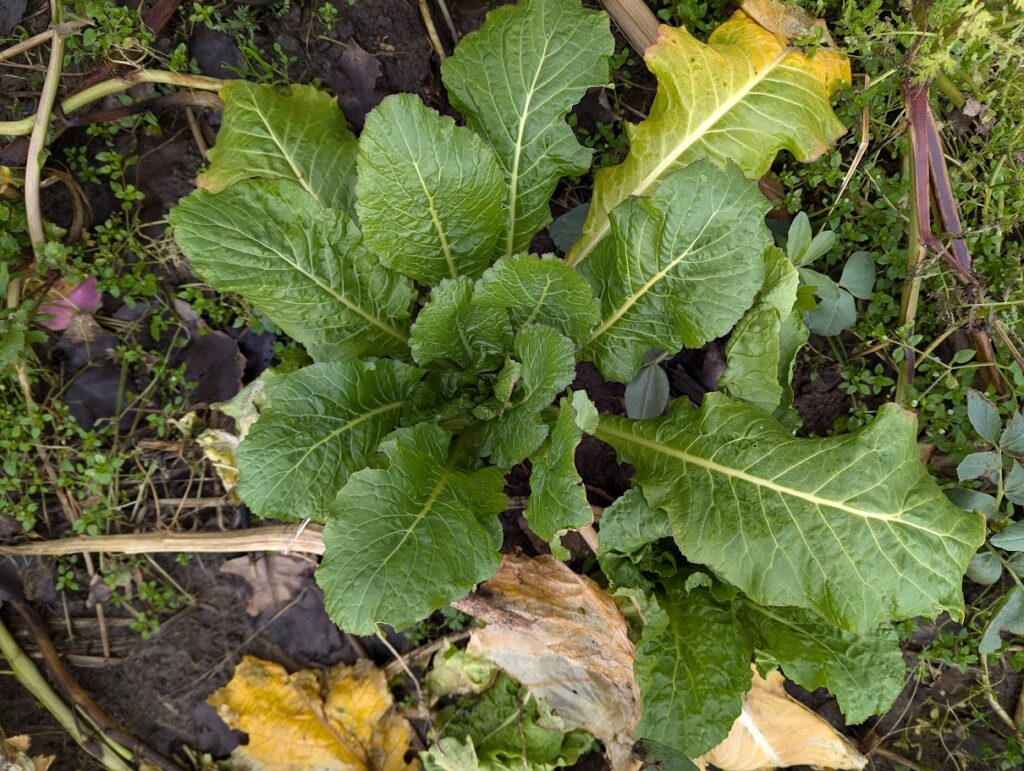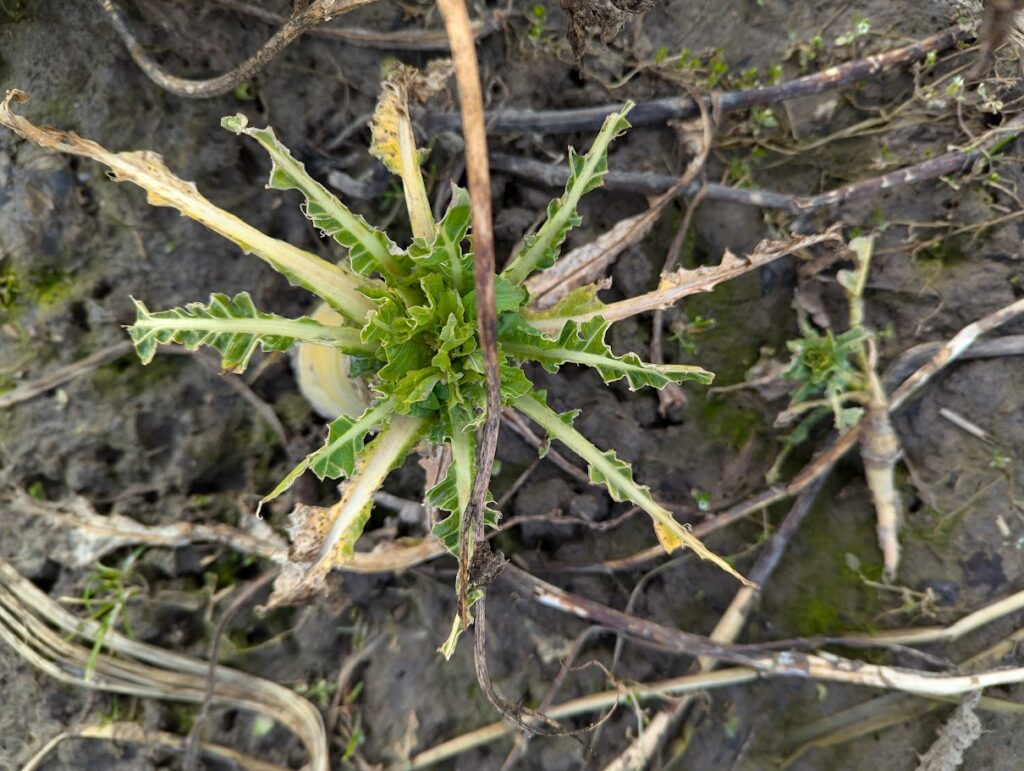Each winter, farmland across Metro Vancouver and the Fraser Valley plays an important double role: growing cover crops to protect and nourish the soil, and serving as an important habitat for thousands of migratory waterfowl. Our field technicians take on the challenge of surveying winter cover crop vegetation, as well as monitoring farm fields for waterfowl use throughout the winter. These surveys help show how farming and wildlife interact, and how seasonal weather and management decisions can shape these interactions.
In annual soil based agricultural fields, cover crops are planted after the main harvest to reduce soil erosion over the winter and boost fertility, but cover crops also provide food and shelter for ducks, geese, and swans while they migrate through the area. In 2024 – 2025, over 400 farm fields participated in the Cover Crop Program, all the way from Delta to Agassiz. The vegetation survey measured crop height, coverage, and the grazing damage from waterfowl measured three times from November to March. While the waterfowl survey recorded over 40,000 birds across 727 farm fields, both enrolled and non-enrolled in the cover crop program, during weekly visits to track species presence and field usage from October to March.


A flock of Snow Geese grazing in a field of corn stubble in Abbotsford, BC.
The two surveys showed that both cover crop performance and bird activity varied by region, planting date, and crop type. Fields in Delta and other Metro Vancouver areas had the highest grazing pressure from waterfowl, especially from Snow Geese and Mallards. Along the survey route in Delta, a few hotspots were observed which had higher than average waterfowl presence, including Brunswick Point, Westham Island, Crescent Island and Southlands. These areas may be a great spot for birders to spot a large flock of Snow Geese. In contrast, fields in the Fraser Valley experienced less grazing overall. On the Abbotsford survey route waterfowl were widespread and there were no clusters of higher activity observed. Among the different crop mixes, the “Pollinator Mix” was the most heavily grazed, though this may reflect its limited planting area in historically high-grazing zones.

A graph demonstrating the difference in grazing damage between each type of cover crop planted, by region.
As with most years, cover crop planting dates played a critical role in vegetation outcomes. Fields planted earlier in the fall had taller and more established crops through early winter, offering better protection for soil and more food for wildlife. However, by March, vegetation height dropped significantly across most field types due to winterkill and bird foraging. Despite this, fields retained more cover this year compared to last, likely due to milder early-winter conditions.


A tillage radish in a pollinator mix cover crop field planted in January 2025 (left) and March 2025 (right), showing the progression of waterfowl grazing in Delta, BC.
The waterfowl survey echoed these seasonal changes. Bird numbers were slightly lower than the previous year, with average weekly counts below 2,000—less than half of the previous winter’s averages. Our field techs attributed this to a wetter fall, which saturated fields and slowed early crop growth, as well as delayed migration to the region, which was likely tied to higher fall temperatures. Disease pressures such as avian flu may have also played a role.
One challenge highlighted was the difficulty in fully capturing nighttime foraging by species like Snow Geese. While traditional field observations are limited to daylight hours, new technology like autonomous recording units (ARUs) is being tested to monitor bird activity continuously.
Together, these surveys provide valuable insights into how farmland management affects both crop success and wildlife habitat. By understanding the relationship between planting timing, crop type, and bird behavior, programs like these help farmers make informed decisions that benefit both soil health and migratory birds.
